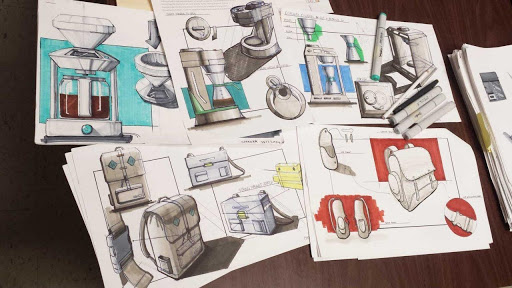You must have come across the term industrial design many times. It may sound like a modern term, but its origin was in the 18th century. But what does industrial design mean? How it became an integral part of the product life cycle in the 21st century? The reason is industrial design revolutionised the world of manufacturing and product development.
Industrial design is the design process with an approach of enhancing the product’s features, which creates an emotional value in the customer’s mind. For decades, the industrial design helped to make products more humane. Now let’s see how industrial design has become an essential part of every step of the product life cycle, from product design to manufacturing. It transformed the way how products are designed.
Emotional Connection between the Product & User
Industrial design allows the designers to integrate various aspects of a product’s fit, form, and function into its development. While the product life cycle emphasises creating the best-manufactured product, product design helps to make that product highly useful and relevant for its customer.
It strives to make the most logical product for the customer by incorporating the inputs from observing the customer’s behaviour, opinions and lifestyle. This way, customers find the product most useful, creating an emotional connection and brand loyalty in their minds.
Higher Chances of Success
Applying design thinking at every phase of the product’s lifestyle can significantly improve the possibility of a product’s success. Businesses who use design thinking at the end of the product life cycle or who neglect it usually struggle to find the best solution for the customer’s problem with their product.
A Valuable Business Asset
A business can register industrial design under Intellectual property laws. These laws focus on protecting products with unique and innovative designs, shape, pattern or ornament as intellectual property. Registering a product design can open the door of opportunities for a business.
A business that holds the patent of the design of any product or product feature can reap the fruits of royalty from other companies who want to use the same design. The business can also sue and receive compensation from the companies that imitate the same design without legal permission.
A More Visually Appealing Product
As a patent helps to protect an improved or innovative functionality of a product, industrial design helps create a visually appealing product by innovating its visual aspects such as its design, shape or pattern. This approach of design thinking helped Apple to become a trillion-dollar organisation in a consumer-driven market.
Helps to Stand Out in the Competition
Industrial design emphasises creating visually unique and ingenious products. The uniqueness in terms of shape, appearance, design and pattern helps a product stand out in the thousands of competing products with monotonous designs. The industrial design focuses more on the distinguished appearance of the product than its functionality.
To simplify it, let’s look at the competition between Coca-Cola and Pepsi. They may have the same content in their bottles, but their bottles’ designs are distinct. If Pepsi decides to imitate the design of Coca Cola’s iconic glass bottle, Coca-Cola can sue Pepsi legally as it has registered the design of its iconic Coke bottle.
These were enough reasons to showcase how industrial design can revolutionise how a product is manufactured for the masses and help businesses reach and exceed their business goals. The industrial design needs to be adopted by every company to reach new heights of success.












